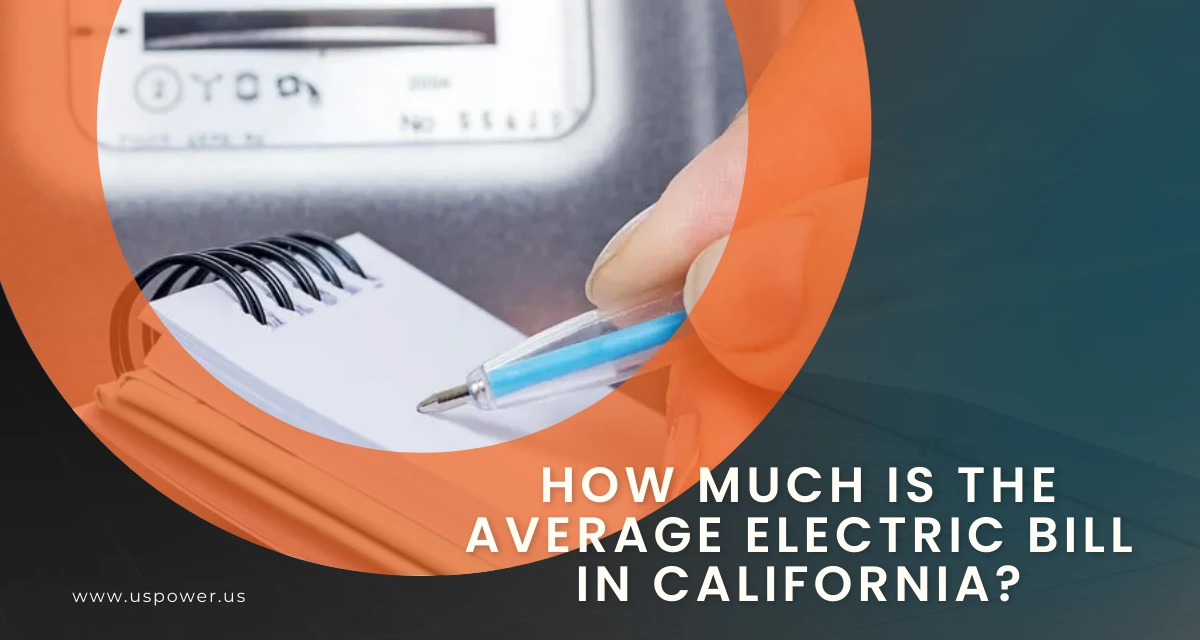It’s TODAY! The Urgency to Go Solar in California

Solar and Roofing Advisor
Take advantage of 30% federal tax credit & SGIP rebates with Qcells solar installation through US Power. Join thousands of SoCal homeowners saving with solar.

California homeowners are racing to beat the next wave of electric rate hikes, with experts warning that waiting to install solar could cost thousands in lost savings and missed incentives.
According to data from the California Public Utilities Commission (CPUC), residential electricity rates across Southern California Edison (SCE) and San Diego Gas & Electric (SDG&E) have surged nearly 28 percent since 2022—and another increase is expected early 2026.
Meanwhile, industry analysts say the combination of record-high rates, new metering rules (NEM 3.0), and limited federal incentives make this one of the most urgent moments ever to switch to solar.
Power Prices Soaring, Incentives Still in Place—for Now
Electricity in Southern California is now among the most expensive in the U.S.
As of fall 2025, homeowners pay:
- $0.33–$0.47 per kWh depending on their utility and rate plan (SCE Rate Advisory 2025)
- National average: just $0.16 per kWh (U.S. Energy Information Administration)
“Californians are paying nearly double the national average, and the costs keep climbing,” said Alex Reynolds, an energy analyst with GreenMetrics USA. “The fastest way to protect yourself is to own your power source.”
Fortunately, homeowners still have access to major solar incentives, but experts warn that both funding and policy windows are tightening.
The 2025 Solar Window: What You Can Still Claim
The Federal Investment Tax Credit remains at 30% for residential solar systems installed through 2025. That includes panels, inverters, and battery storage when purchased together.
In addition, the California Self-Generation Incentive Program (SGIP) continues to offer battery rebates worth $3,000–$4,500 per home—especially valuable under NEM 3.0, which reduces compensation for exported power.
“Installing a solar-plus-storage system now ensures you capture both the federal credit and state rebate,” explained Merri Johnson, project manager at US Power, a Southern California-based installer. “Homeowners who wait could lose out as budgets reset in 2026.”
How Much Does Solar Installation Cost in Southern California (October 2025)?
Current market data show the average price of solar installation in California is $2.60 to $3.10 per watt before incentives.
Typical 6 kW system:
- Before credit: ≈ $16,000–$18,600
- After 30% tax credit: ≈ $11,200–$13,000
- With battery storage: + $9,000–$13,000, minus SGIP rebate
Despite higher upfront cost, solar owners see dramatic long-term savings. A 7 kW system can offset more than $2,200 per year, often paying for itself in 8–10 years—then delivering 15 years or more of nearly free electricity.
Why Qcells Solar Panels Are Taking Over Southern California
As local homeowners demand better value and reliability, Qcells has emerged as the top-rated solar brand for 2025, combining U.S. manufacturing with superior efficiency.
- Made in America: Qcells modules are assembled in Georgia, creating over 4,000 U.S. jobs.
- Efficiency up to 22.5%: The new Q.TRON BLK M-G2+ panel ranks among the highest-performing residential panels in North America.
- 25-year product & performance warranty: Guaranteed durability and minimal degradation.
- Smart pairing with batteries: Integrates seamlessly with Qcells, Tesla, Enphase, and FranklinWH storage systems.
Through an exclusive partnership with Qcells, US Power offers factory-direct pricing—reducing middle-man markups and accelerating installation timelines.
“Homeowners trust us because we deliver American-made technology at unbeatable value,” said Owen Lopez, operations director at US Power. “We’re not just installing panels; we’re helping Californians take control of their energy future.”
The New Normal: Solar + Battery Is the Smart Play
California’s NEM 3.0 changed how solar exports are credited. Instead of earning nearly full retail rates, homeowners now receive an “avoided-cost” rate that can be 75 % lower. The solution? Store your solar energy and use it after dark.
Battery storage provides:
- Energy independence: Use your power day and night.
- Outage protection: Stay powered during grid failures.
- Peak-hour savings: Avoid high evening rates between 4–9 p.m.
With the latest Qcells Battery Reserve H5 system, capacity reaches 20 kWh—enough to run essentials for a full day. Add the 30 % tax credit and SGIP rebate, and payback accelerates dramatically.
What Homeowners Gain by Switching in 2025
| Benefit | Details |
|---|---|
| Federal Tax Credit | 30 % of system cost through 2025 |
| Battery Rebate (SGIP) | Up to $4,500 per home |
| Average Solar Cost | $2.60–$3.10 per watt (CA 2025) |
| Efficiency Leader | Qcells Q.TRON BLK M-G2+ 22.5 % |
| Home Value Increase | +4 % avg in CA resale value |
Local Momentum: Southern California Leads the Solar Shift
Across Los Angeles, Ventura, and Orange County, installation requests have spiked. According to industry data from SolarReviews, Southern California accounted for over 42% of new residential installs statewide this year.
Neighborhoods like Sherman Oaks, Pasadena, and Woodland Hills are seeing record numbers of homeowners adding both solar and battery storage systems before the end of 2025.
“It’s no longer just about saving money—it’s about stability,” said Jerime Castillo, senior consultant at US Power. “Between grid outages, rate hikes, and extreme heat, Californians want energy security.”
Beyond Savings: The Environmental Payoff
Each home that goes solar prevents an estimated 6 to 8 metric tons of CO₂ emissions annually, equivalent to planting 130 trees per year.
Collectively, US Power’s Southern California installations have already offset over 20,000 tons of CO₂ since 2021.
What to Do Next
- Schedule a free solar consultation
- Receive a personalized quote showing cost, savings, and tax credit eligibility.
- Lock in today’s incentives before funding resets.
Make Your Final Decision!
If you’ve been waiting for “the right time,” experts say it’s today. Solar incentives remain strong in 2025—but program budgets are limited, and installation queues are filling fast ahead of 2026 rate changes. Southern California homeowners are facing electricity rates averaging around 32¢ per kWh—and utilities have already proposed additional hikes for 2026. Every month of delay means higher bills and smaller solar savings.
The 30% Federal Solar Tax Credit, combined with California’s battery rebates, makes 2025 one of the most financially rewarding years to install solar before incentive budgets reset. Current installation costs remain highly competitive, averaging $2.38–$3.25 per watt before incentives. When paired with storage, most systems achieve payback in just 8–10 years, followed by decades of near-zero electric bills.
Homeowners choosing Qcells solar panels gain up to 22.5% efficiency, durable American-made quality, and long-term performance protection backed by industry-leading warranties (Qcells North America, 2025). Partner with US Power to unlock factory-direct Qcells pricing, local expertise, and a fully managed solar installation process designed to help Southern California families save more—faster.
Don’t wait for the next utility rate hike—schedule your free quote today at and start generating your own clean energy now.
Related Articles
Our Related Blogs
Combat rising electricity costs with smart home solar solutions from US Power.
Learn how solar panels in 2025 can save homeowners significant utility costs.
Learn California's average electric bill and reduce costs by switching to solar.
Our Solar and Roof Brand Partners








We empower communities and businesses to harness clean, renewable solar energy solutions that drive sustainable growth.
Ready to Own Your Power? Call us today!
818-650-8010
Copyright © 2025 US Power - Axia by QCells. All Rights Reserved.
Privacy is important to us, so you have the option of disabling certain types of storage that may not be necessary for the basic functioning of the website. Blocking categories may impact your experience on the website.
Essential
These items are required to enable basic website functionality.
Personalization
These items allow the website to remember choices you make (such as your user name, language, or the region you are in) and provide enhanced, more personal features.
Marketing
These items are used to deliver advertising that is more relevant to you and your interests.
Analytics
These items help the website operator understand how its website performs, how visitors interact with the site, and whether there may be technical issues.
We and our third-party partners use cookies and other technologies to enhance and track your experience on this site, conduct analytics, and personalize marketing to you. By using the site, you agree to our use of these technologies, including recording and monitoring your interactions with the site.
Get an instant solar estimate using satellite!









